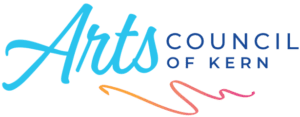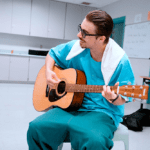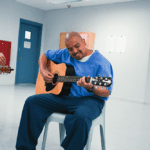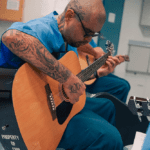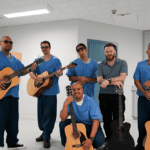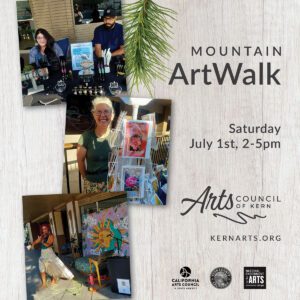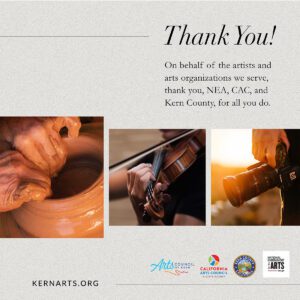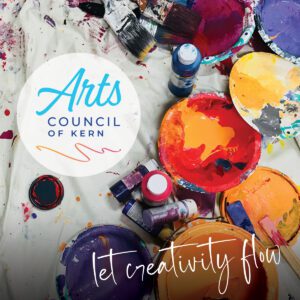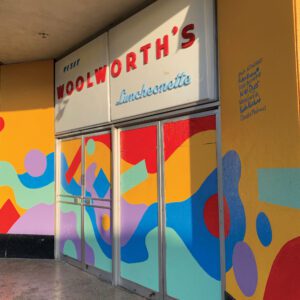ARTS IN CORRECTIONS
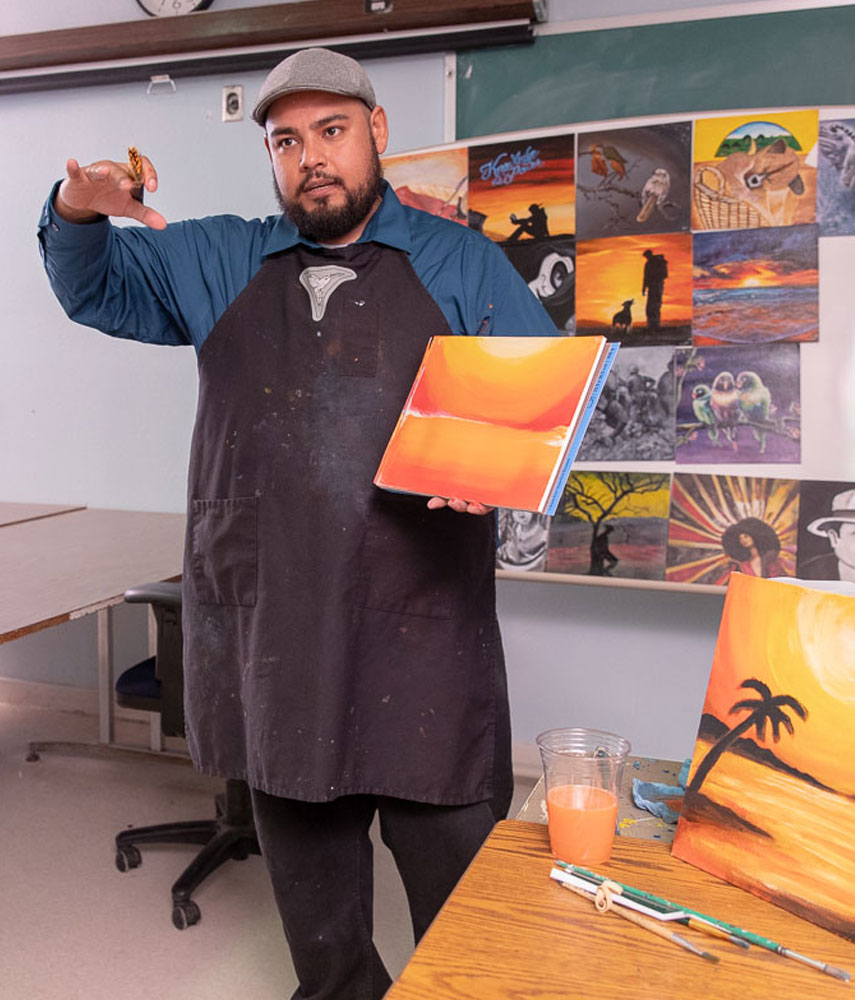
Alex Gallardo
Arts in Corrections
Arts in Corrections (AIC) is a partnership between the California Department of Corrections and Rehabilitation (CDCR) and the California Arts Council (CAC). CAC offers grant opportunities for organizations to compete for funding through proposals for their AIC programming. The Arts Council of Kern is among the recipients or grantees for funding the AIC program. This grant funds classes within institutions here in the Central Valley.
In this painting class, instructor Alex Gallardo led some students in a step-by-step exercise while others worked on individual projects.
AIC Art Show at Top Hat
Journey back to a poignant exploration of inner transformation with our past exhibit, “Transformation: Art From Within.” Held at the Top Hat Art Collective, this showcase illuminated the profound creativity of individuals within the Arts in Corrections program. Through the evocative works of both incarcerated artists and their dedicated instructors, visitors were invited to witness the power of art to transcend boundaries and foster healing.
Arts in Corrections programs play a vital role in the rehabilitation and transformation of incarcerated individuals.
Among these transformative initiatives is Michael Ransom’s guitars and keyboard classes at Kern Valley State Prison, KVSP, which has been making a positive impact on the lives of participants. In this post, we explore the significance of Arts in Corrections classes and delve into the unique approach and benefits of Michael Ransom’s class at KVSP.
Arts in Corrections classes provide incarcerated individuals with a unique opportunity for personal growth and development. Engaging in creative expressions like music, painting, or writing. The classes foster a sense of self-worth and accomplishment, which is crucial for those seeking redemption and reintegration into society. The Arts in Corrections program helps individuals to heal, build self-confidence, and develop essential skills that can be applied beyond their time in prison.
Led by the passionate and dedicated instructor Michael Ransom, the guitars class at KVSP has become a beacon of hope for many inmates. Ransom’s approach goes beyond teaching guitar skills; he emphasizes fostering a supportive and inclusive environment where participants can connect through music. By creating an atmosphere of trust and respect, Ransom encourages individuals to open up and express themselves authentically.
The Arts Council of Kern has worked with incarcerated communities in the central valley for over 15 years.
AIC is designed to prepare incarcerated individuals’ success upon release, enhance rehabilitative goals, and improve the safety and environment of CDCR institutions. Such programming enhances the participant’s life, focusing on diversity, equity, trust, and inclusion while centering healing and impact understanding within communities inside and outside the institutions.
ACK provides regular classes on various subjects, including visual, media, performing, and multidisciplinary arts. Offering creative outlets help incarcerated individuals with problem-solving skills and provides coping mechanisms that reduce the impacts of stress and trauma. Involvement in the program directly affects one’s growth as they engage in such activities as outlined: group sessions, dance, poetry, learning instruments, learning new art forms, and sharing their work with their families and or communities.

Involvement in the program directly affects one’s growth as they engage in such activities as outlined: group sessions, dance, poetry, learning instruments, learning new art forms, and sharing their work with their families and or communities.
AIC is designed to prepare incarcerated individuals’ success upon release, enhance rehabilitative goals, and improve the safety and environment of CDCR institutions.
Such programming enhances the participant’s life, focusing on diversity, equity, trust, and inclusion while centering healing and impact understanding within communities inside and outside the institutions. ACK provides regular classes on various subjects, including visual, media, performing, and multidisciplinary arts. Offering creative outlets help incarcerated individuals with problem-solving skills and provides coping mechanisms that reduce the impacts of stress and trauma.
AIC
The main goal of AIC is to reduce recidivism, basically lowering the chances of people reoffending and returning to prison. This directly affects the community in which many participants participate in so many ways.
ACK is focusing on continuing to provide classes to institutions as well as bridging this communication gap by providing more opportunities for the public to view and get involved with such positive programs. Many communities are affected by incarceration; community events would give a sense of connection between incarcerated people and the outside community. We plan to expand services, ensuring that more institutions and participants can experience the transformative benefits of the arts.
AIC Student

Alex Gallardo
AIC Project Manager
“One thing I would like our community to remember is that many of the people that take these classes are not all incarcerated for violent crimes but have many unfortunate stories. With the many different art forms, Arts in Corrections has such a transformative positive healing effect on people’s lives. These classes help in many positive ways our community needs. If we heal each other, we grow together as a supportive, inclusive community.”
CHANGE IS POSSIBLE
Art evokes the mystery without which the world would not exist.
—René Magritte
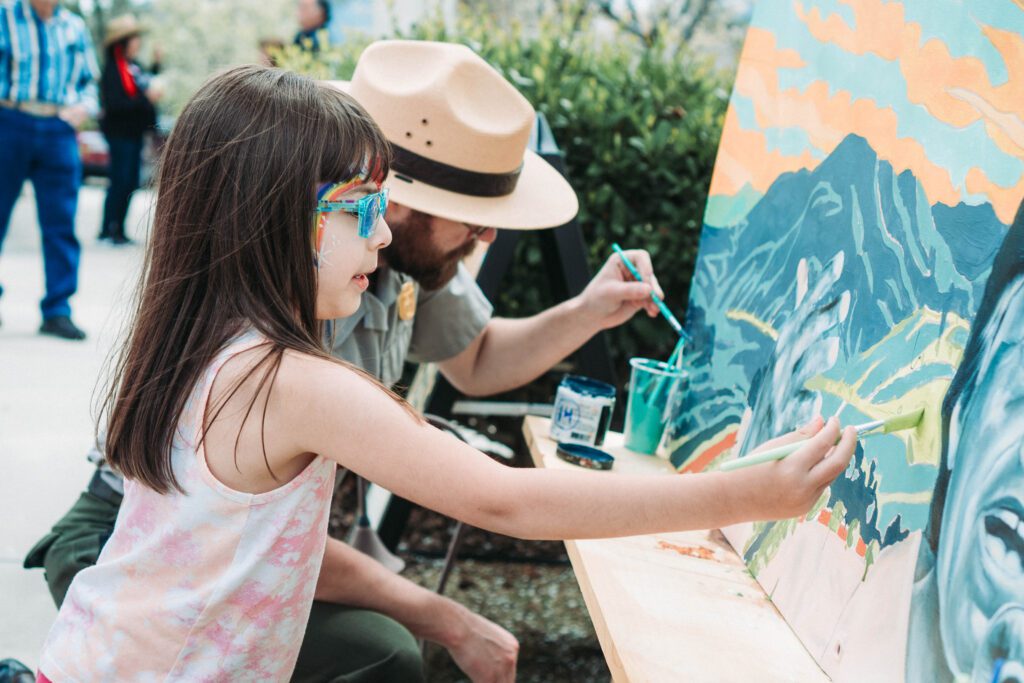
We’re looking for
Volunteers & Art Instructors
The Arts Council of Kern is looking for volunteers and instructors of all art forms for our events and art programs!
For volunteering opportunities contact Sam Sharp Sam@kernarts.org
Local Events Happening
Enter your email below to learn about local events, new classes, and news throughout Kern County.
@ 2023 Kern County Arts Council | all rights reserved
